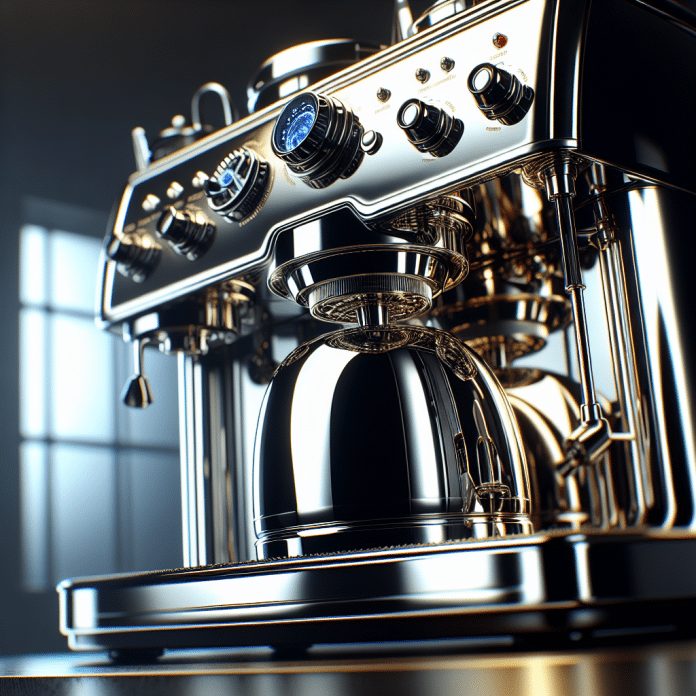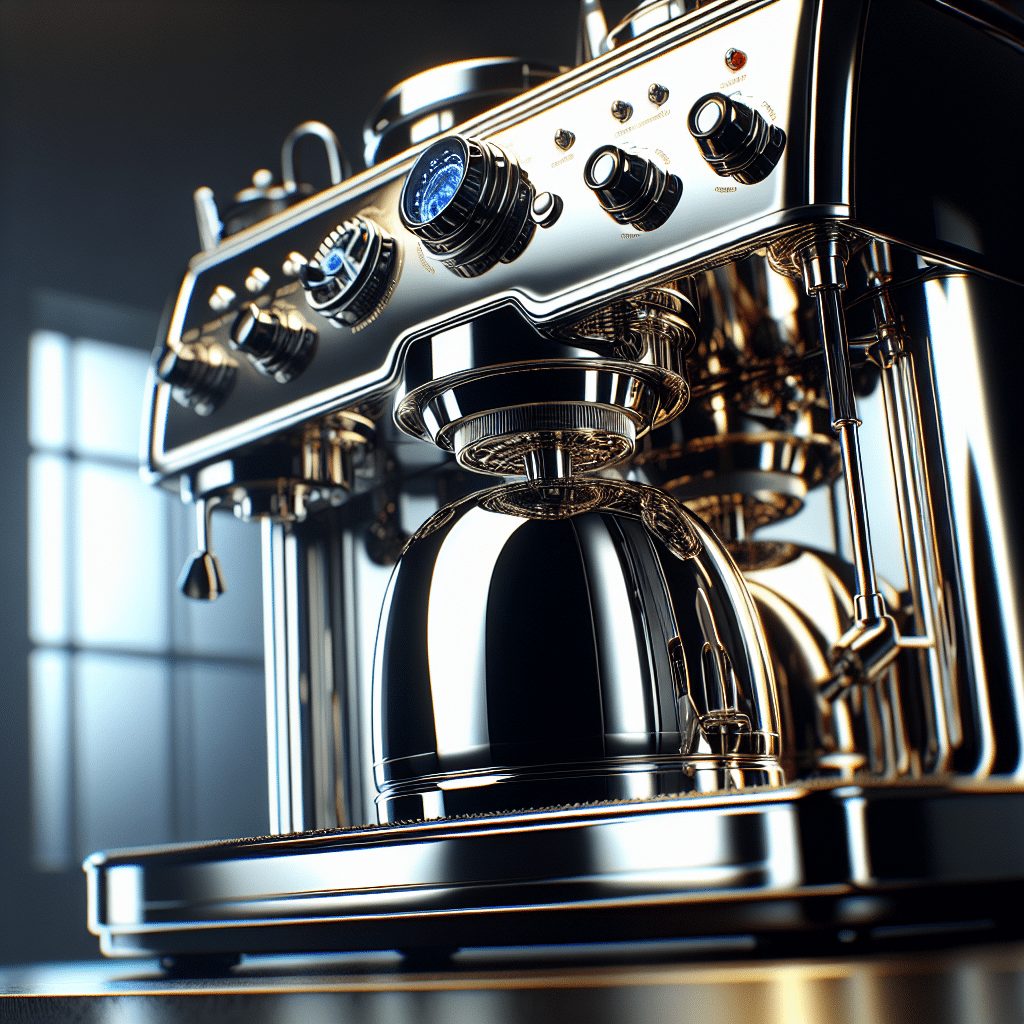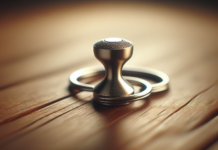In this article, we will explore the importance of using specialty cleaners to clean brewers, ensuring optimal performance and delicious brews every time. We will discuss the potential risks of not properly cleaning brewers, as well as the benefits of using specialty cleaners specifically designed for this purpose. By the end of this article, you’ll understand the significance of maintaining clean brewers and the role specialty cleaners play in achieving this goal. So, let’s dive in and discover the secrets behind pristine brewing equipment!
Types of Brewers
Drip Coffee Brewers
Drip coffee brewers are one of the most common types of coffee makers found in households. These brewers work by dripping hot water over ground coffee beans, resulting in a smooth and flavorful cup of coffee. They are easy to use and require minimal effort to maintain and clean.
Espresso Machines
Espresso machines are a beloved choice for coffee enthusiasts who enjoy a strong and concentrated cup of coffee. These machines use pressure to force hot water through tightly-packed coffee grounds, creating a rich and robust espresso shot. Due to their intricate design and functionality, espresso machines require regular cleaning to ensure optimal performance and flavor.
French Press
The French press is a classic and simple brewing method that produces a full-bodied and flavorful cup of coffee. It consists of a glass or metal container with a plunger and a mesh filter. The coffee grounds steep in hot water, and then the plunger is pressed down to separate the brewed coffee from the grounds. Cleaning a French press is relatively easy, but proper maintenance is important to avoid any residue buildup.
Percolators
Percolators were once a popular choice for coffee brewing, known for their distinctive bubbling sound and strong brew. These brewers work by continuously cycling boiling water over coffee grounds until your desired strength is achieved. While percolators may not be as commonly used today, some coffee enthusiasts still appreciate their unique brewing process. Cleaning a percolator involves regular maintenance and deep cleaning to prevent any residue or clogging issues.
Importance of Cleaning
Maintaining Flavor
Proper and regular cleaning of brewers is essential for maintaining the flavor of your coffee. Over time, residue from coffee oils, mineral deposits, and other particles can build up in the brewing components, affecting the taste of your brew. By keeping your brewer clean, you ensure that each cup of coffee retains its full flavor profile and tastes as intended.
Preventing Clogging
Brewers, especially those with intricate parts, can easily become clogged if not cleaned regularly. Residue and coffee grounds can accumulate, blocking the flow of water and affecting the brewing process. Regular cleaning prevents clogs, ensuring that your coffee maker functions properly and consistently delivers a smooth and hassle-free brewing experience.
Extending Lifespan
Cleaning your brewer not only ensures a delicious cup of coffee but also helps prolong the lifespan of your equipment. Without proper maintenance and regular cleaning, mineral deposits, mold, and bacteria can accumulate over time, potentially damaging the internal mechanisms and compromising the performance of your brewer. By incorporating regular cleaning into your coffee routine, you can extend the lifespan of your beloved brewing equipment.
Choosing the Right Specialty Cleaner
Understanding Brewer Materials
Before choosing a specialty cleaner, it’s important to consider the materials that make up your brewer. Different brewing methods utilize various materials such as glass, plastic, stainless steel, or aluminum. Each material may require different cleaning agents to maintain their condition and prevent any damage. Always check the manufacturer’s recommendations regarding cleaning products suitable for your specific brewer type.
Considering Residue Types
Depending on the brewing method, residue can vary from coffee oils and grounds to mineral deposits and mold. Understanding the type of residue your brewer tends to accumulate can help you choose a specialty cleaner formulated to target and remove it effectively. Look for cleaners that specifically mention their ability to tackle the residue commonly found in your chosen brewing method.
Evaluating Safety and Environment-friendliness
When selecting a specialty cleaner, it’s vital to consider its safety and impact on the environment. Opt for cleaners that are non-toxic, food-safe, and biodegradable. Avoid harsh chemicals that can leave residue or have adverse effects on the taste of your coffee or the longevity of your brewer. Choosing eco-friendly cleaning products promotes sustainability and ensures a healthier brewing experience.
Cleaning Frequency and Schedule
Daily Cleaning
Daily cleaning routines are essential for maintaining the cleanliness and freshness of your brewer. After each use, make sure to remove any leftover coffee grounds or filters, rinse the brewing components, and wipe down the exterior. This helps prevent residue buildup and maintains the integrity of your brewer.
Weekly Cleaning
In addition to daily maintenance, a more thorough weekly cleaning should be incorporated into your routine. This involves disassembling removable parts and cleaning them with a specialty cleaner, such as the ones discussed above. Pay close attention to areas prone to residue accumulation, such as filter baskets, drip trays, and steam wands. Wipe down the exterior of the brewer to remove any spills or stains.
Monthly Deep Cleaning
Once a month, it’s important to perform a deep cleaning to remove any stubborn residue or mineral deposits. Follow the manufacturer’s instructions for your specific brewer type. This may involve descaling the internal components using a descaling solution or vinegar. Deep cleaning ensures the longevity of your brewer and prevents any performance issues.
Cleaning Process for Drip Coffee Brewers
Preparing the Brewer
Before starting the cleaning process, ensure that the brewer is unplugged and cool. Empty any leftover coffee grounds or filters and discard them properly. If applicable, remove and rinse the filter basket and other removable parts.
Cleaning the Detachable Parts
Detach the removable parts such as the carafe, filter basket, and lid. Clean them thoroughly using a specialty cleaner suitable for your brewing materials. Scrub the parts gently with a brush or sponge to remove any residue, rinse them with water, and dry them before reassembling.
Descaling
Descaling is an important step to remove mineral deposits that can affect the performance of your drip coffee brewer. Follow the manufacturer’s instructions for the appropriate descaling solution or vinegar dilution. Run a brewing cycle with the descaling solution, making sure to cycle water through both the water reservoir and the brewing chamber. Rinse thoroughly with clean water afterward.
Wiping the Brewer Body
Using a damp cloth or sponge, wipe down the exterior of the brewer. Pay attention to any spills or stains, ensuring that all surfaces are clean and dry. Avoid using abrasive materials or harsh chemicals that can damage the finish. Regular wiping helps maintain the appearance of your brewer and prevents any residue buildup.
Cleaning Process for Espresso Machines
Backflushing with a Cleaner
Espresso machines require backflushing to clean the group head and remove any coffee oils and residue that can accumulate. Remove the portafilter, insert a blind filter or cleaning disc, and add a small amount of a cleaning agent specifically designed for espresso machines. Follow the manufacturer’s instructions for the appropriate cleaning procedure. Run the backflushing process according to the recommended frequency.
Cleaning Portafilter and Filter Baskets
After each use, remove the portafilter and filter basket from the espresso machine. Rinse them with water to remove coffee grounds and residue. Use a brush or sponge to clean the parts thoroughly with a specialty cleaner suitable for espresso machines. Pay attention to any buildup on the filter basket and ensure it is clean and ready for the next use.
Descaling the Boiler
Regular descaling of the boiler is essential for preventing mineral buildup and maintaining the performance of your espresso machine. Follow the manufacturer’s instructions for the appropriate descaling solution or vinegar dilution. Run a descaling cycle through the machine, allowing the solution to cycle through the boiler and other internal components. Rinse thoroughly afterward to remove any traces of the descaling solution.
Cleaning the Steam Wand
The steam wand is a crucial component of an espresso machine, used to froth milk for lattes and cappuccinos. After each use, wipe the steam wand with a damp cloth to remove any milk residue. If the steam wand becomes clogged or develops any stubborn residue, soak it in a specialty cleaner or a solution of warm water and vinegar. Use a small brush to clean the steam wand thoroughly, rinsing it afterward.
Cleaning Process for French Press
Disassembling
Disassemble the French press by removing the plunger, filter assembly, and any other removable parts. Rinse them with water to remove coffee grounds and residue.
Scrubbing and Rinsing the Plunger
Clean the plunger thoroughly with a specialty cleaner suitable for the materials of your French press. Use a brush or sponge to scrub the mesh filter and dislodge any residue. Rinse the plunger and filter assembly with water, ensuring that all coffee grounds are removed.
Cleaning the Glass and Metal Parts
Clean the glass or metal container of the French press with a specialty cleaner. Scrub the inside and outside of the container gently to remove any coffee oils or stains. Pay attention to any crevices or handles that may require extra cleaning. Rinse the container with water, ensuring that all residue is removed.
Drying and Reassembling
After cleaning, thoroughly dry all parts of the French press before reassembling. This helps prevent any moisture or residue buildup. Reassemble the filter assembly, plunger, and any other removable parts. Your French press is now ready to brew another delicious cup of coffee.
Cleaning Process for Percolators
Emptying and Rinsing the Percolator
After each use, empty any leftover coffee from the percolator and discard the used coffee grounds. Rinse the percolator thoroughly with water to remove any residue or coffee oils.
Cleaning the Basket and Stem
Remove the basket and stem from the percolator. Clean them with a specialty cleaner suitable for the materials of your percolator. Use a brush or sponge to scrub away any coffee residue or stains. Rinse the basket and stem with water to ensure they are clean and ready for the next use.
Descaling the Interior
Descaling is essential to remove mineral deposits that can accumulate in the percolator’s interior. Follow the manufacturer’s instructions for the appropriate descaling solution or vinegar dilution. Add the descaling solution to the percolator, ensuring it covers all surfaces. Allow it to sit for the recommended time, then rinse thoroughly with clean water.
Cleaning the Exterior
Using a damp cloth or sponge, wipe down the exterior of the percolator. Pay attention to any spills or stains, ensuring that all surfaces are clean and dry. Avoid using abrasive materials or harsh chemicals that can damage the finish. Regularly cleaning the exterior maintains the appearance of your percolator and prevents any residue buildup.
Additional Cleaning Tips and Tricks
Removing Coffee Stains
If your brewer or its components develop coffee stains over time, try using a mixture of warm water and a gentle detergent. Apply the solution to the stained areas and let it sit for a few minutes. Gently scrub the stains with a brush or sponge, then rinse thoroughly. This method should help remove stubborn coffee stains and restore the appearance of your brewer.
Cleaning Filters and Screens
For brewers with reusable filters or screens, regular cleaning is essential to maintain their performance. After each use, rinse the filter or screen thoroughly to remove any coffee grounds or residue. For deeper cleaning, soak the filter or screen in a specialty cleaner or a solution of warm water and vinegar. Scrub gently to remove any buildup before rinsing thoroughly.
Removing Mineral Deposits
If your brewer’s water reservoir or other components develop mineral deposits, descaling is necessary to remove them. Follow the manufacturer’s instructions for the appropriate descaling solution or vinegar dilution. Allow the solution to sit in the affected areas for the recommended time, then rinse thoroughly with clean water. Regular descaling helps prevent mineral buildup and ensures the longevity of your coffee maker.
Avoiding Harsh Chemicals
When cleaning your brewer, it’s important to avoid using harsh chemicals that can leave residue or have adverse effects on the taste of your coffee. Opt for specialty cleaners specifically designed for coffee brewers or natural alternatives like vinegar solutions. Harsh chemicals can not only affect the flavor of your coffee but also potentially damage the internal components of your brewer.
Troubleshooting Cleaning Issues
Persistent Odors
If your brewer develops persistent odors even after regular cleaning, try running a brewing cycle with a mixture of water and lemon juice or baking soda. This helps eliminate any lingering smells and freshens up the internal components of your brewer.
Unclear or Cloudy Brew
If your brewed coffee appears unclear or cloudy, it could be due to residue buildup or mineral deposits. Ensure that you are regularly cleaning your brewer and performing deep cleaning when necessary. If the issue persists, consider adjusting your brewing technique or consulting your brewer’s manual for further troubleshooting steps.
Difficulties in Dismantling Parts
If you encounter difficulties when disassembling or reassembling the components of your brewer, ensure that you are following the manufacturer’s instructions. Sometimes, parts may be tightly fit or require a specific technique to remove or attach. If you are still having trouble, consult the manufacturer’s customer support or an experienced coffee technician for assistance.
Leaks and Drips
If your brewer is experiencing leaks or drips, inspect the components for any cracks, loose fittings, or worn-out seals. Replace any damaged or worn-out parts as necessary. Proper cleaning and maintenance can help prevent leaks by keeping the internal components in good condition.
By following these cleaning processes, tips, and troubleshooting steps, you can ensure that your chosen brewer stays clean, functional, and consistently provides you with delicious and flavorful cups of coffee. Regular cleaning not only extends the lifespan of your brewer but also enhances the overall coffee brewing experience. Cheers to clean and tasty coffee!






































